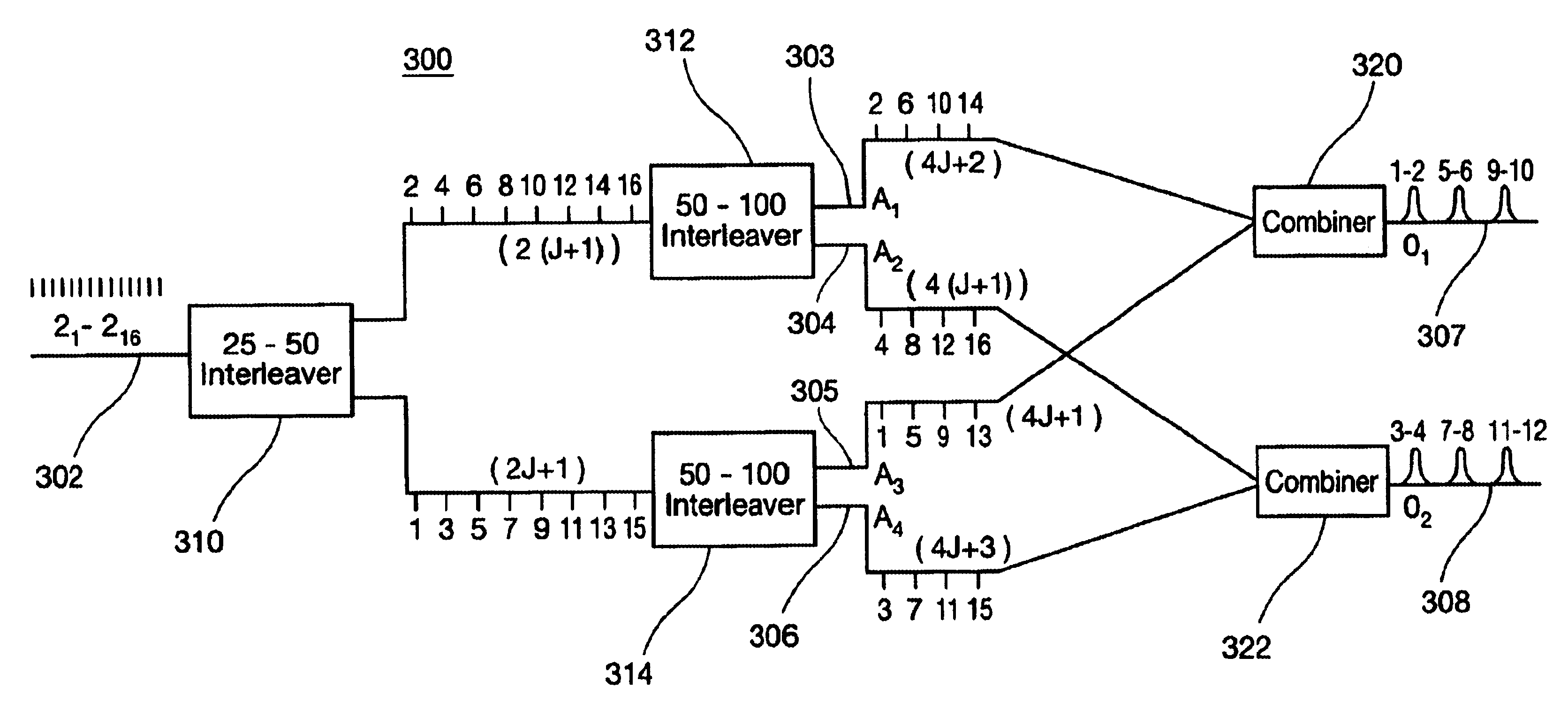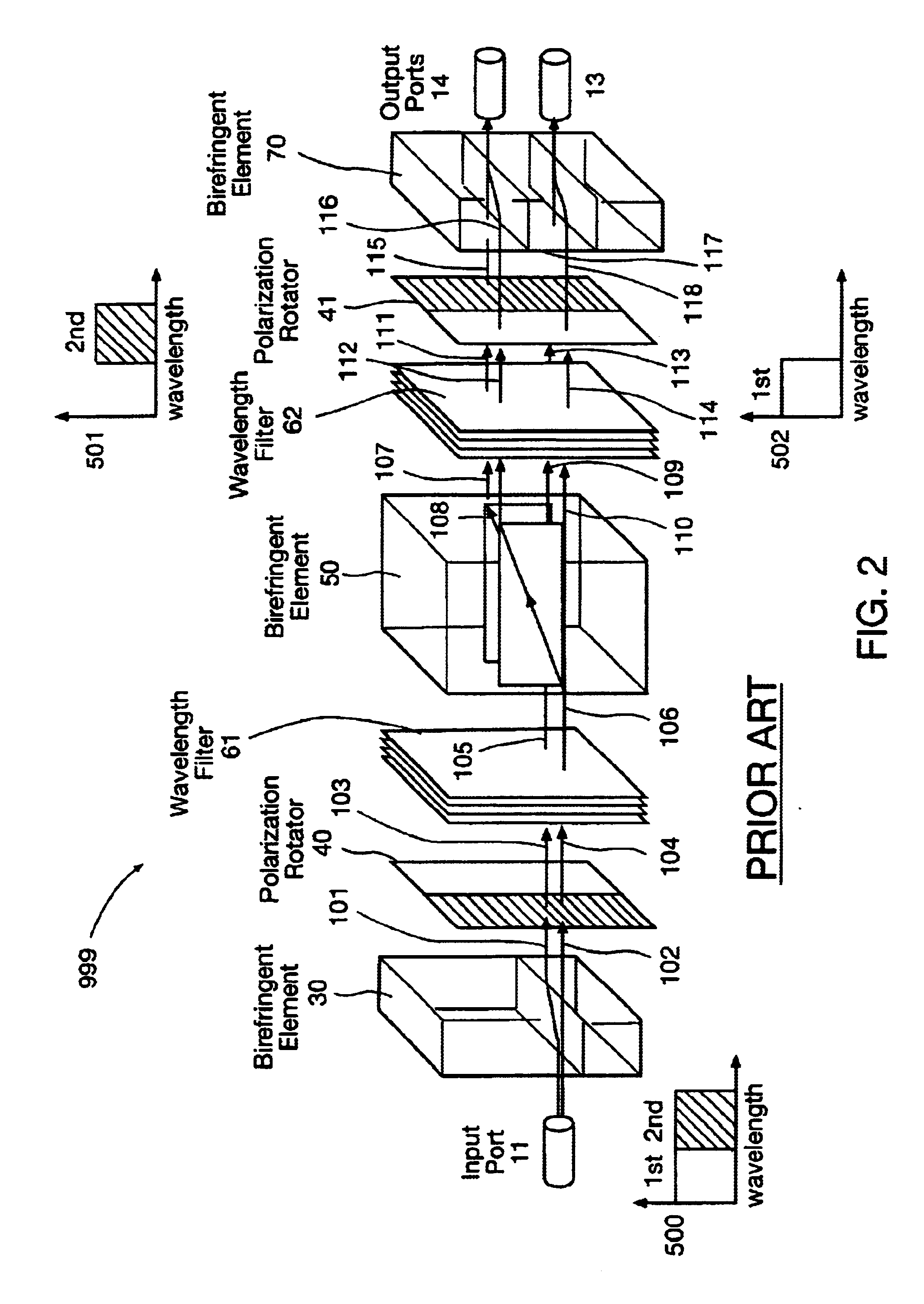Wide passband optical interleaver
a wide-passband, optical interleaver technology, applied in the field of wdm and dwdm communication systems, can solve the problems of falling off (i.e., the slope of the passband sidewall) and high cost for parties
- Summary
- Abstract
- Description
- Claims
- Application Information
AI Technical Summary
Benefits of technology
Problems solved by technology
Method used
Image
Examples
Embodiment Construction
[0019]FIG. 1 illustrates the functionality of a conventional single-stage 1×2 optical interleaver. As shown, interleaver 150 receives on input port 156 a WDM optical signal having a channel spacing of 100 GHz and converts it two signals each having a channel spacing of 200 GHz, which are directed to output ports 152 and 154. While the device shown in FIG. 1 can function as both an interleaver and a deinterleaver, it will generally be referred to simply as an interleaver. The deinterleaver separates a subsets of channels. The interleaver mixes subsets of channels. In this example, when functioning as a deinterleaver, the odd channels have a 200 GHz spacing and the even channels have a 200 GHz spacing. When functioning as an interleaver, the even and odd channels having 200 GHz spacing are combined into a signal stream having 100 GHz signal spacing. Similar interleaving can be provided to convert between 50 GHz spaced channels and 100 GHz spaced channels, as well as between other sets...
PUM
 Login to View More
Login to View More Abstract
Description
Claims
Application Information
 Login to View More
Login to View More - R&D
- Intellectual Property
- Life Sciences
- Materials
- Tech Scout
- Unparalleled Data Quality
- Higher Quality Content
- 60% Fewer Hallucinations
Browse by: Latest US Patents, China's latest patents, Technical Efficacy Thesaurus, Application Domain, Technology Topic, Popular Technical Reports.
© 2025 PatSnap. All rights reserved.Legal|Privacy policy|Modern Slavery Act Transparency Statement|Sitemap|About US| Contact US: help@patsnap.com



